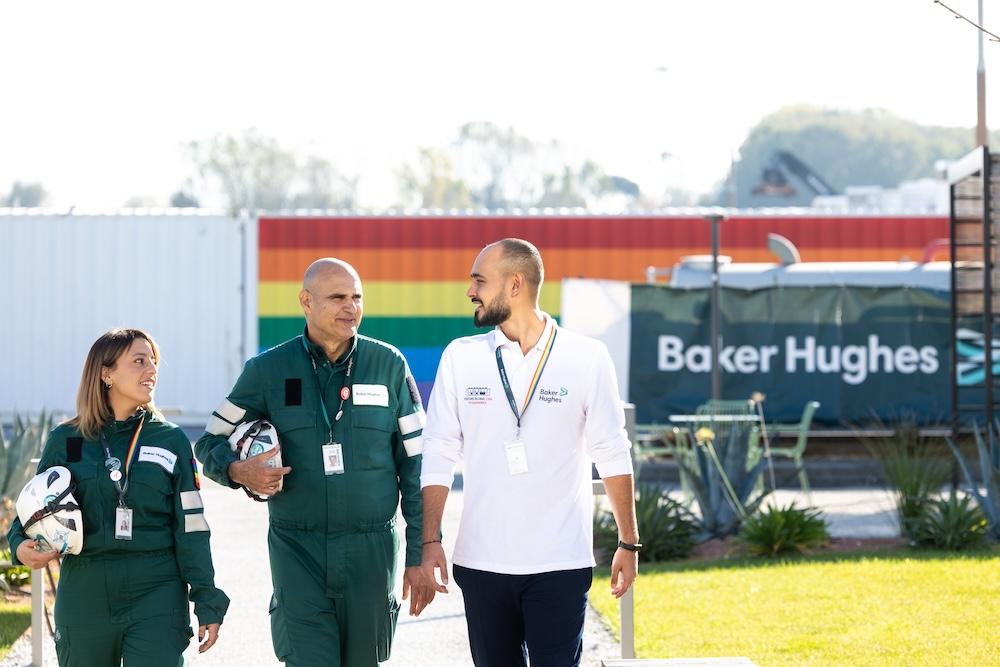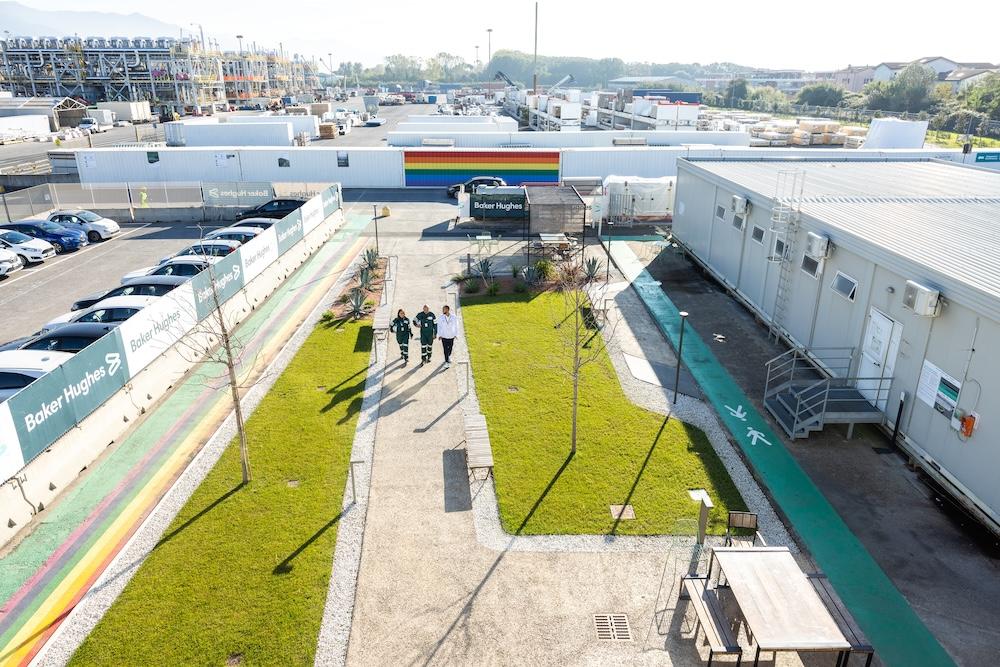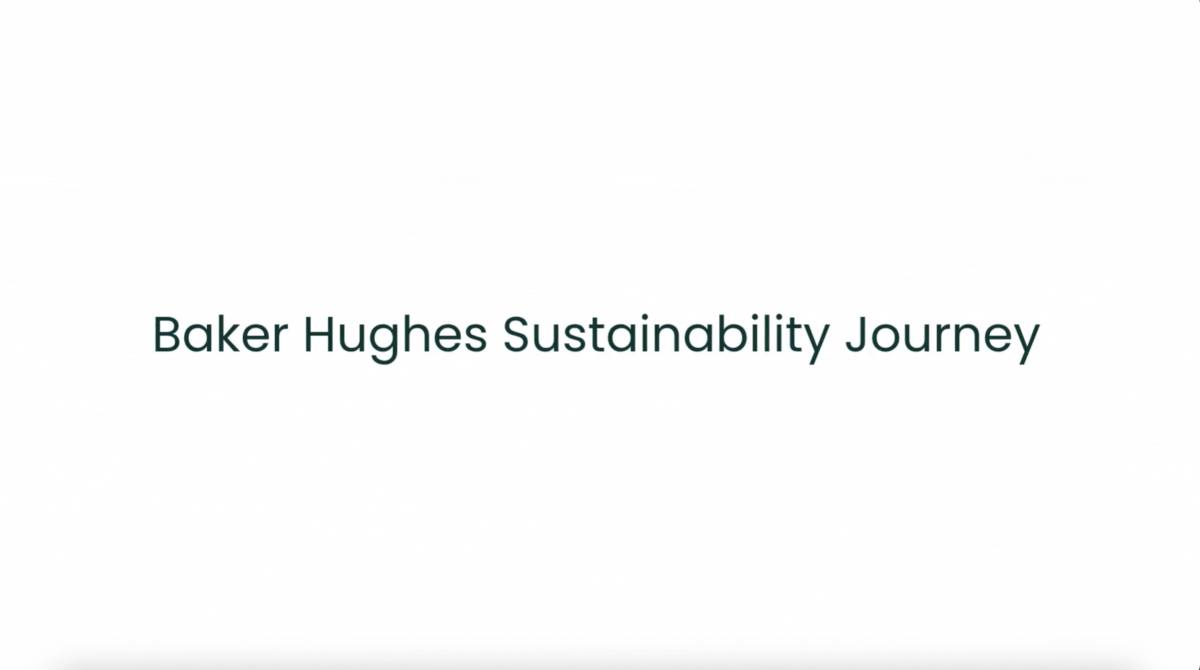All In, Carbon Out
All in. Carbon out. At Baker Hughes ‘Carbon Out’ empowers employees to champion sustainability and cut GHG emissions globally.
This story first appeared on Baker Hughes’ Energy Forward Stories.
'Carbon Out' is Baker Hughes’ global employee engagement program officially launched in 2022 to support efforts in reducing both direct and indirect emissions across the full value chain. The program empowers employees at all levels to identify and implement emissions reduction projects, which range from small, local improvements to more extensive operational changes.
Rather than being directed from the top down, Carbon Out is built on the principle that sustainability is a shared responsibility. From field personnel, scientists, to product line champions, all are actively involved in improving processes, increasing efficiency, and integrating emissions reduction projects in line with Baker Hughes’ commitment to reaching Net Zero operational emissions by 2050, and reducing Scope 3.
The Energy Forward team interviewed Marie Merle Caekebeke, executive sustainability strategic engagement at Baker Hughes who leads sustainability deployment globally, to learn more about the Carbon Out program.
“Through Carbon Out, our employees identify areas where we can improve operational efficiency and reduce emissions, often resulting in measurable cost reductions. Carbon Out is about empowering our 57,000+ people globally, to drive sustainable progress and learn from one another—building momentum on our actions and leveraging our progress at scale.”
Marie Merle Caekebeke, Baker Hughes
She summarized four key things to know about the Carbon Out program, with examples to spotlight progress so far:
1/It is powered by people
Carbon Out is driven by people who know the work best, from field personnel to corporate leads. Employees are the ones identifying challenges and proposing solutions for efficiency and lower-carbon outcomes across the organization. A network of internal champions supports the process, helping shape ideas into real-world, measurable projects.
The program started small, with a few passionate people and a handful of aspirational ideas. However, it has grown rapidly with over 800 Carbon Out projects implemented to date and a Carbon Out network of nearly 700 employees. Weekly Q&A sessions now connect Baker Hughes employees across global time zones to share advice, ask questions, and spark new ideas. A growing intranet resource hub houses templates, case studies, and best practices, as well access to a global Carbon Out champions network, making it easier to track what’s working and share successful strategies across the company’s various regional sites. The program has become a living network of problem-solvers, changing the way teams approach their day-to-day work.
For current and potential employees who are driven by purpose and passionate about making a difference through sustainability, Carbon Out offers an established framework, tools and resources to make an impact on an individual or team level.
"Carbon Out and emissions reduction are still relatively new areas for many of our teams. By showcasing successful projects and sharing best practices, we’re demonstrating what’s possible—and enabling those successes to be scaled across the organization. By setting ambitious goals and consistently tracking our progress, we’ve created a culture of accountability and momentum. This approach has empowered our teams to not only meet, but often exceed, our emissions reduction targets. Success is driving real, measurable impact through the Carbon Out program."
Lee Robinson, Carbon Out champion, Completion Well Intervention, Baker Hughes
Example:
Carbon Out week sparks over 100 energy efficiency opportunities
The teams are encouraged to go on a Gemba walk — or energy treasure hunt — and log ideas and opportunities for improvement. This year, for one of the Baker Hughes teams, there were over 100 opportunities identified, keeping the project backlog populated and setting the teams up for success in 2025. Each day had a different focus, such as lighting, heating ventilation and air conditioning and shut down procedures, to help the teams focus on target areas of opportunity.
2/Carbon Out mirrors Cost-Out due to operational and financial efficiencies
There is often a myth that sustainability is expensive or needs heavy upfront investment. However, under the Carbon Out program, Baker Hughes has proven that sustainability initiatives do not have to be expensive to achieve impact. Any employee can submit ideas, and the project pipeline is reviewed by the Carbon Out leaders. Once selected, the implemented projects tend to recover the amount invested within the first few years, resulting in operational as well as financial efficiencies.
With an initiative like Carbon Out, opportunities with local partnerships arise. With this program Baker Hughes now powers seven Italian sites with renewable energy which can lead to a reduction of 6.8 kilotons of carbon dioxide equivalent (CO2e) – equivalent to removing 1200 gasoline powered cars from the road each year.
Example:
Digital Technology Efficiency
At a Baker Hughes facility in Florence, Italy, the digital technology, engineering, and facility teams collaborated to consolidate its computing and data storage into a primary data center. This project started with a full inventory of the assets, owner’s assignation and strategy definition.
Through reducing the number of old leased high-performance computing (HPC) and consolidating crucial network devices, this work provided a cost savings of around $300K USD, drove significant emissions reduction, and reduced the potential of cybersecurity risks.
“In order to take these goals, which are aspirations and translate those aspirations into action, you have to build a program coupled with tools and resources to give people the opportunity to take ownership and lead measurable progress in their specific domains.”
Marie Merle Caekebeke, Baker Hughes
3/It has a direct impact on Scope 1, 2 and 3 emissions.
With initiatives driven largely by local sites and teams at Baker Hughes, Carbon Out enables employees to have a direct impact on reducing Scope 1 and 2 operational emissions. In addition, one of the more complex areas in emissions reporting is Scope 3, which includes emissions from assets not owned or directly controlled by a company. This is where Carbon Out stands out. The program gives Baker Hughes teams tools and a structured pathway to look across the full value chain where they can identify and report on activities that influence indirect emissions.
With a roadmap focused on high-emission categories, effectively addressing indirect emissions across the value chain, Baker Hughes has enabled its employees and supply chain experts to succeed in reducing emissions through cost-effective and sustainable transport while maintaining customer expectations.
Several projects have been launched to target scope 3 emissions reductions such as:
- Employee remote training via augmented reality
- Shipment consolidation to reduce diesel usage
- Installation of electric vehicle charging points
- Shipping crate recycling
- Installation of new digital meters for water usage monitoring
- Usage of reusable containers with customers
- Transferring disposal waste to incineration with energy recovery
"In today’s world, business challenges are never isolated. What I admire most about the Carbon Out program is its ripple effect—every step toward cutting emissions also unlocks hidden value: lower costs, less waste, and smarter use of resources. It’s not only about reducing emissions—it’s about doing better with less"
Giulio Ardini, Gas Technology Equipment Manufacturing Leader, Baker Hughes
Example:
Cutting emissions, innovating routes
Keeping sustainability top of mind means identifying emissions reduction opportunities to enable the company’s logistics strategy. This involves working on a pool of projects identified with internal customers and suppliers and collaborating across the global organization of sourcing and procurement leaders.
The logistics team continues to use shipment consolidation as one of the main levers, avoiding emissions in 2024 through this process. Additionally, the Amsterdam-Livorno rail route has been identified and applied for a pilot project showing strong emissions reduction compared to ground transportation.
Another pilot project highlighted tremendous emissions reduction by shipping gas generators by ocean instead of air. These initiatives demonstrate the company’s commitment to sustainability and its proactive approach to reducing emissions in logistics.
Hydropower eliminates 4,500 MWh of grid electricity use
To meet electricity needs, two Baker Hughes sites in Norway have transitioned from using grid power to hydropower energy. Hydropower is a renewable energy source that generates electricity by harnessing the energy of flowing water without producing GHG emissions.
This sustainable energy source not only provides a steady and reliable energy supply but also minimizes environmental impact compared to fossil fuels. Previously, these sites required approximately 4,500 MWh supplied by grid electricity. This change resulted in 100% of the electricity supplied in 2024 from hydropower and zero emissions.
4/It’s about embedding sustainability in culture through collaboration.
Sustainability is at the heart of Baker Hughes’ corporate purpose and through Carbon Out, the company has operationalized emissions reduction by weaving it into the culture, as each employee has an opportunity – and a responsibility – to make an impact.
Through education, training, resources and an established central process, Carbon Out fosters collaboration and knowledge-sharing of best sustainability practices.
Having sustainability as one of the eight core behaviors for Baker Hughes employees guiding performance and management emphasizes the role employees play in reaching the company’s sustainability commitments.
‘’The key to success is that Carbon Out is not an initiative handed down from the top. It’s embedded in our employees’ DNA, making sustainability part of the job – no matter their role.’’
Marie Merle Caeebeke, Baker Hughes
Example:
Enhancing supply chain emissions reporting through the Baker Hughes Supplier Emissions Platform
In 2024, Baker Hughes teams collaboratively developed a hybrid methodology Supply Engagement software platform, which enabled digitizing, managing, streamlining and standardizing emissions calculations. The platform was designed to improve data accuracy by ensuring end-to-end data traceability and support reporting and analysis.
A model for culture-driven decarbonization
The Carbon Out program demonstrates how cultural change, and operational innovation can synergize effectively. This program is not only reducing emissions but also transforming the company's mindset, actions, and collaboration efforts towards sustainability.
“I'm excited about lasting change; we've built something that is transforming the way we work and are embedding sustainability as a key differentiator not only for Baker Hughes, and for our customers, but for people and the planet.”
Marie Merle Caekebeke, Baker Hughes
- 200+ Project owners leading sustainability initiatives
- 650+ People engaged in our Carbon Out network
- 50+ Countries with projects initiated
- 590+ Projects in our implementation pipeline
These projects reflect a bigger shift – where sustainability isn’t just a target, it’s a mindset that’s woven into how people think, act, and innovate.
In an industry that demands large-scale solutions, Carbon Out proves that some of the most powerful ideas start small – with employees who are committed to making a difference. This is progress at scale.







